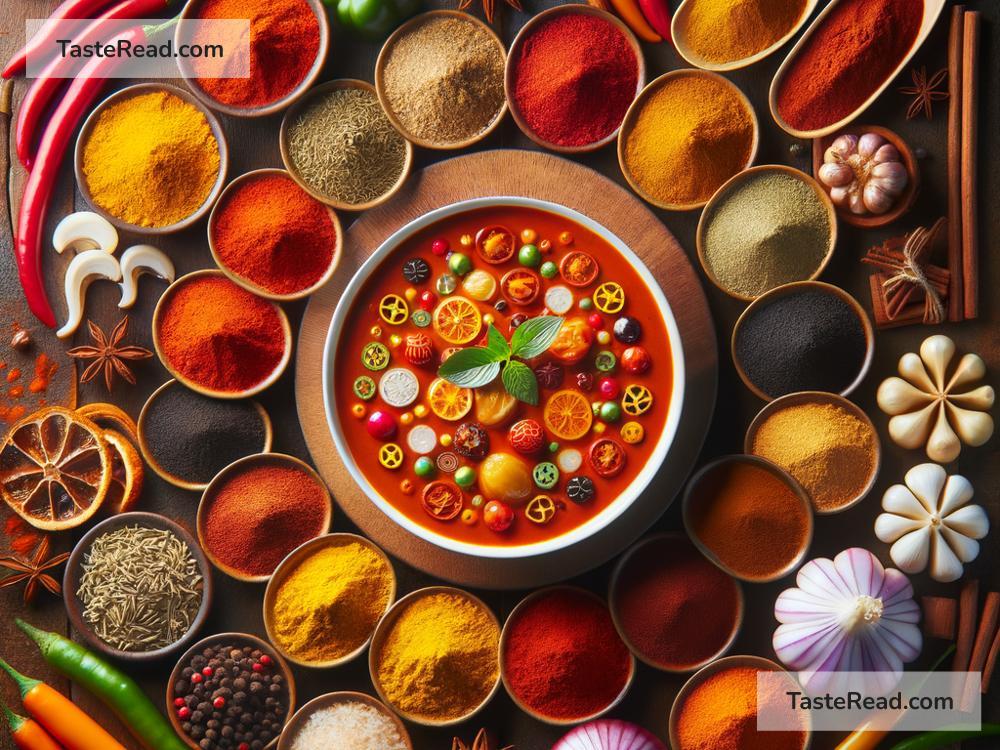The Influence of Indian Spices on Southeast Asian Curries: A Culinary Journey
When it comes to rich, flavorful dishes that tantalize the taste buds, Indian and Southeast Asian cuisines stand out for their liberal use of spices. Anyone who has ever enjoyed a hearty curry from these regions can attest to the magic woven by a blend of spices. But did you know that many of the spices and culinary techniques that define Southeast Asian curries were significantly influenced by Indian cuisine? Let’s embark on a culinary journey to explore this fascinating blend of flavors and traditions.
The Spice Route: A Path of Culinary Exchange
The history of this influence dates back to ancient times, traveling through the spice route—a network of sea and land routes that connected the East and West. Indian merchants and Buddhist monks journeyed through Southeast Asia, carrying with them not just goods for trade, but also their culinary traditions, including a treasure trove of spices such as turmeric, cumin, and coriander. These spices, once introduced to Southeast Asia, found a new home, enriching the local cuisine with their robust flavors.
A Marriage of Flavors
The impact of Indian spices on Southeast Asian curries can be seen in countries like Thailand, Indonesia, and Malaysia. Each has its own unique version of curry, but the influence of Indian spices is unmistakable. For example, the Indonesian “Rendang” or the Malaysian “Rendang,” though distinct in their preparation and additional ingredients, share a base of spices that is inherently Indian.
Turmeric, with its earthy flavor and golden hue, is a staple in both Indian and Southeast Asian curries, imparting a rich color and a layer of taste that is both subtle and impactful. Cumin, with its warm and slightly bitter essence, adds depth to dishes, while coriander offers a hint of citrus and sweetness that balances the heat from other spices like chili peppers, which were also brought to Southeast Asia from the Americas through colonial trade, integrating further into the rich tapestry of flavors in Southeast Asian curries.
Blending Techniques and Traditions
It’s not just the spices themselves, but how they are used that showcases the influence of Indian cuisine on Southeast Asian curries. The technique of blending spices into a paste, for instance, is a culinary practice that Southeast Asian chefs adopted from their Indian counterparts. This method of preparing spices maximizes their flavor, color, and aroma, creating a more potent base for curries.
Moreover, the concept of ‘tempering’ – a technique used in Indian cooking where spices are roasted in hot oil to release their flavors – is also practiced in Southeast Asian cuisines, adding an extra layer of taste and complexity to dishes.
The use of coconut milk in Southeast Asian curries could be seen as a divergence from the typically dairy-based gravies in Indian cuisine. However, this adaptation showcases the innovative fusion of local ingredients with Indian culinary techniques, creating entirely new flavors that are both familiar and distinct.
A Cultural Melting Pot
The influence of Indian spices on Southeast Asian curries is a testament to the exchange of cultures and traditions. This culinary crossover has created a melting pot of flavors that transcends borders, highlighting the universal language of food.
In Thailand, the vibrant “Massaman Curry,” with its roots in Indian Muslim cuisine, is a perfect illustration of this blend, incorporating spices like cinnamon, cardamom, and cloves, which are more commonly associated with Indian dishes.
In Malaysia, the famous “Laksa” showcases a beautiful harmony between local ingredients like lemongrass and galangal with Indian spices, creating a spicy noodle soup that is rich in flavors and textures.
Conclusion: A Spice-Filled Legacy
The influence of Indian spices on Southeast Asian curries is a beautiful example of how cultures can come together, share, and adapt, creating something new yet familiar. This culinary journey across borders and through time tells a story of trade, migration, and cultural exchange, leaving us with a legacy that continues to inspire and excite palates around the world.
As we relish a spoonful of curry, whether it’s from India, Thailand, Indonesia, or Malaysia, let’s appreciate the rich history and the myriad of flavors that have come together to create these dishes. The influence of Indian spices on Southeast Asian curries is not just about food; it’s about the enduring connection and shared heritage between these vibrant cultures, a reminder of how intertwined our worlds are, one delicious bite at a time.


